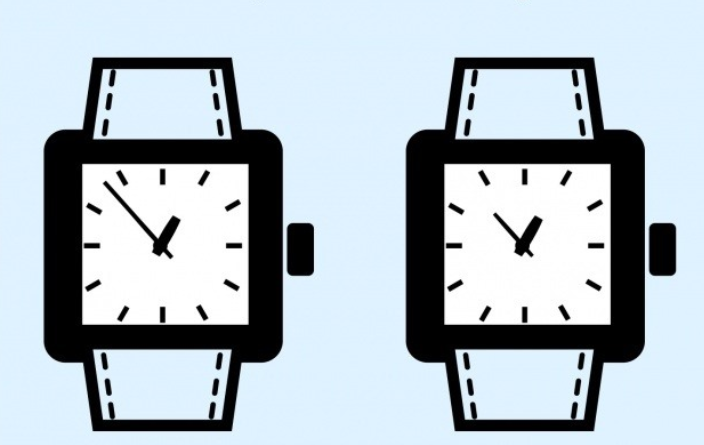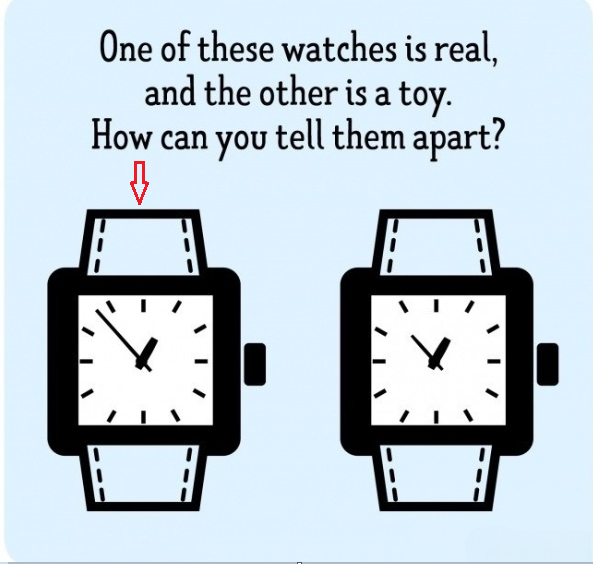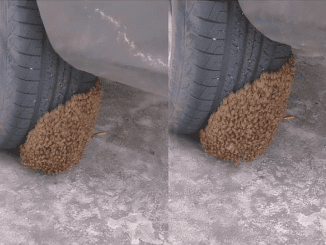At first glance, these two watches look exactly the same — same shape, same hands, same time. But there’s a twist: one of them is a real working watch, and the other is just a toy. The challenge is simple but sneaky: Can you figure out which one is which?
Before you scroll any further, take a good look at both watches. Focus on the details. Then answer honestly — which one do you think is the toy?
Let’s find out together.

Why This Puzzle Can Be So Deceptive
The reason puzzles like this are tricky is that your brain processes shapes and patterns faster than it processes logic. When you see two nearly identical objects, your brain tells you they’re probably the same. But in reality, small details often hide the biggest clues.
Most people focus on the position of the clock hands — which is a good start — but they often miss something even more important: proportions.
Common Mistakes People Make
Judging by overall appearance: Just because both watches look neatly designed doesn’t mean they function the same way.
Ignoring proportions: Your eyes might follow the direction of the hands, but overlook how long or short they are.
Guessing randomly: Let’s be honest, sometimes we guess based on gut feeling. But this puzzle actually gives you enough information to solve it with logic.
Let’s Analyze the Puzzle Step by Step
Both watches show a time of approximately 9:10, which at first looks accurate. But something about one of them is… off.
Video : one of these watches is real & the other is a toy,How can you tell them apart?
Look closer at the left watch.
Notice anything strange?
The minute hand (long hand) seems a bit too long. And more importantly, the hour hand (short hand) is pointing exactly between 9 and 10 — without adjusting even slightly toward the 10.
That doesn’t happen on a real watch.
In real analog watches, when the minute hand points at the 2 (10 minutes), the hour hand should be slightly ahead of the 9, inching its way toward the 10. That small movement reflects the passing minutes. But here? The hour hand just stays stuck — like it’s painted on.
The Correct Answer: The Left Watch Is a Toy
Why? Because the minute hand is too long, and the hour hand hasn’t moved properly to reflect 9:10. This unrealistic placement gives away the fact that the left watch isn’t real — it’s just a toy.
Meanwhile, on the right watch, the hands are positioned naturally:
- The hour hand is slightly ahead of 9
- The minute hand points to 10 minutes
- The proportions look correct and realistic
So, if you answered “the left one is the toy,” congrats — you’re absolutely right! The left watch is a toy because the minute hand is unrealistically long and the hour hand hasn’t moved forward with the passing time.

What This Puzzle Teaches Us
Sometimes, what makes something fake isn’t how it looks at first glance — it’s how it behaves when you apply logic. A real watch reflects time accurately, down to the way its hands move. A toy might look real, but it can’t fake the mechanics.
Puzzles like this remind us to question what we see and look beyond the surface. It’s a simple but powerful way to train your attention to detail.
Did You Spot It Before the Answer?
Be honest — did you get it right without looking?
If you did, awesome! You’ve got a sharp eye. If not, don’t worry. That’s exactly what these brain teasers are for — to help you sharpen your logic and observation skills.
Let us know in the comments:
- Which watch did you pick?
- What gave it away (or fooled you)?
- Would your friends be able to spot the difference?
Tag a friend and challenge them to beat your score!
Video : Can you solve the counterfeit coin riddle?
Conclusion: Look Closer, Think Sharper
At first glance, the left and right watches seem almost identical. But with a little patience and a closer look, the truth reveals itself: the left one is a toy — and you can tell because its minute hand is too long and its hour hand hasn’t shifted, making the time display unrealistic.
It’s a great reminder that in both puzzles and in life, the smallest details often matter most.
So next time you come across a visual challenge, take a breath, slow down, and really look. You never know what clever trick might be hidden in plain sight.
And most importantly — keep having fun with these puzzles. Your brain will thank you.


